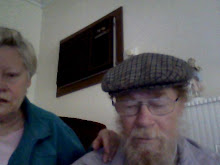Vexillology is the study of flags. There are heraldic protocols which are normally strictly obeyed in the design of new national flags, and there are quite good reasons for this, mainly visibility at distance.
One of the most important of these protocols relates to the colours which may be used, and the way in which they may be used. The word "colour" on flags has specific meanings, and there are only six: Bleu Celeste (sky blue), Azure (blue), Gules (red), Vert (green), Sable (black), and Purpure (purple, not in use on any national flag in the world presently).
Then there are 3 "stains", Murrey (mulberry), Sanguine (blood red), and Tenne (tawny orange.)
There are also 2 "metals", Or (gold, actually yellow), and Argent (silver, actually white).
In British (and Australian) heraldry, and for most of the world too, the only "respectable" departure from those above is described by the term "proper", which means that a featured object such as the Cedar on the Lebanese flag is in its natural colour. Few flags have such proper colours, mainly because so few have a natural feature such as that tree, or Papua-New Guinea's Bird of Paradise, but the relative rarity of such flags in no way detracts from their respectability: in fact such flags may be amongst the most disinctive and elegant of all.
All of the above - colours, metals and stains - are referred to as tinctures.
The rules relating to tincture placement are very specific. Ideally, no more than 3 are used. A colour, in the strict sense as explained above, may not be placed on top of another colour, so, e.g., red may not be placed on blue, nor vice versa; likewise, one metal may not be placed on top of the other. The reason is that, at a distance, red and blue and the other colours are of similar reflectivity, (even though they may be far apart on the spectrum), so they are always separated by a stain or metal very different in reflectivity from themselves. So, red and blue are kept apart by yellow or white. However, where stains are employed, they may be superimposed on colours provided that they are very different in brightness: so, for example, tenne may be satisfyingly placed on azure, since they contrast both in reflectivity and in their positions in the spectrum.
I'm glad of this last possibility, because my preferred flag design places a "Red Kangaroo" on an azure background, along with Crux, the stars of the Southern Cross. The funny thing is that, of course, "Red Kangaroos" are not red! They are russet, or nankeen, or orangey, but obviously not scarlet nor crimson. So, a Red Kangaroo "proper" may be tenne on an azure ground, and it shows up splendidly.
One more heraldic demand is that any animal/s featured on flags must face the flagpole.
I love Kangaroos with a passion, and the original Penny Kangaroo as featured on our superseded coinage is to me the most iconic of all Australian designs. In real life, Kangaroos in motion are the most graceful of all land animals, no argument. So that's what I want on our flag:
"On an azure ground, a Red Kangaroo proper (alternatively, tenne) courant ('running'), surrounded by the stars of Crux in their natural proportions."
Now that's a Flag!
Tuesday, April 1, 2008
Subscribe to:
Post Comments (Atom)



1 comment:
Hey Bruce,
Great blog,
But I can't find any responses!!
You're too conservative!! - Obviously I and probably everyone else from my generation who has ever given any thought to republican Australia and our new flag agrees totally with everything you say.
Only thing is I would like to recognise indigenous Australians on our new flag and I'm not sure that you've done that.
Will you be standing for President?
Alan
Post a Comment